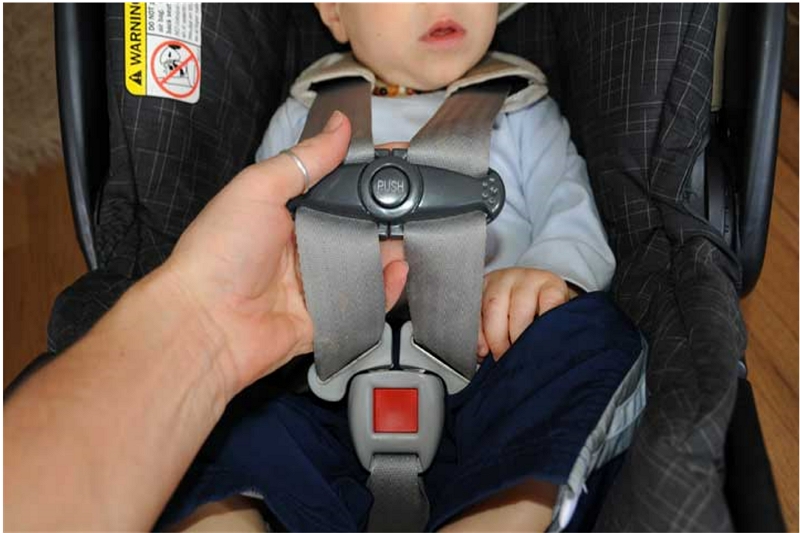Booster seats can provide a safer car experience for your child, but only when they are installed correctly. Here’s how to install booster seat with harness in the backseat of the family vehicle:

Steps on installing booster seat with harness
Step 1 – Find an appropriate place for a booster seat in the middle or right side passenger position
Step 2 – Remove existing LATCH connectors from lower anchors and connect them to corresponding belt path slots located on the bottom surface of the booster seat base
Step 3 – Buckle buckle slot over-centre lap portion of adult safety belt which is being used as top tether strap during the installation process. Adjust both sides equally so that it fits securely around the child’s body while remaining snug against the vehicle’s seatback at all times
Step 4 – Ensure higher shoulder guide loops fit securely between headrest posts and upper shoulders by pulling harness straps forward. If necessary, adjust harness height by threading harness through each slot in headrest posts.
When can my child use a belt-positioning booster?
When your child has outgrown their forward-facing harnessed car seat (at least four feet tall and around eight years old), they should move into a belt-positioning booster.
A belt positioner is not safe to use for more than one crash, no matter how minor the collision was. After any crash in which the airbag deployed or there were injuries involved, you must get rid of it immediately because an unretrieved object can become dangerous projectiles during another accident.
If your child isn’t ready to sit by themselves yet when travelling in other cars, be sure that this type of safety device is being used until they can ride with just a regular seatbelt on their own!
What is a belt-positioning booster seat?
A belt-positioning booster seat is a car safety device that helps raise the child so that the adult-sized seat belt fits them better. It’s typically used by children over 40 pounds who have outgrown their forward-facing harnessed car seats but are still too small for an adult lap and shoulder belt to fit correctly.
Many of these types of seats come with highbacks or armrests which make sitting in one easier than trying to use just your vehicle’s standard seatbelt alone.
Usually, they are designed very similarly to forward-facing five-point harnesses, only without the crotch strap/shield between their legs (this will depend on what type you buy). Not all vehicles require boosters, however, it can be very beneficial to have one.
How much should a child weigh to sit in the front seat?
A child should be of a certain age before being allowed to sit in the front seat. This is important because children are not taught how fast cars go, and what it feels like when they get hit by them.
There are also many other reasons why this law exists that you can read about here! According to KidsHealth, on average children weigh 40 pounds at one year old which makes them exempt from sitting in the backseat until 12 years of age.
At two years old, children typically still only weigh between 50-60 pounds making them unable to sit in the front seat but must ride behind their parent or guardian until they turn eight years of age if their car does not have side airbags for extra protection during an accident.
Although each state has their laws, it is recommended to check with your state’s department of transportation for the up to date information.
What are the height and weight requirements for booster seats?
Booster seats are recommended for children who have outgrown their forward-facing car seats. They should be used until the vehicle’s lap belt fits correctly on the child, without a booster cushion or using an adult seatbelt extender/adapter which is NOT safe!
Children must also reach a height and weight requirements before being allowed to use only the regular vehicle’s seatbelts. The Federal Motor Vehicle Safety Standards require that booster seats restrict your child from slipping under it during impact (thus becoming more of a problem than protection), but not so tight as to cause injury due to pressure on his/her stomach, neck, face or spine areas.
This will vary depending upon each child, however. Some common guidelines include:
* A child should be at least four years old and weigh more than 40 pounds before transitioning from a forward-facing car seat to a booster cushion.
* A child who is eight years or older, over 57 inches tall, and weighs less than 100 pounds can use the vehicle’s lap/shoulder belt without any additional equipment.
Do high back boosters expire?
Backless boosters do not expire, but high back booster seats usually have an expiration date on the label. This is because most car seat manufacturers recommend replacing these types of car safety restraints after a certain period due to changes in materials with age or extensive wear and tear from use over several years.
While no child restraint will last forever, parents need to know when they should replace their child’s harnessed seat so that he or she can continue using one safely until reaching either the maximum weight limits (usually around 65 pounds depending on the model) or height limit outlined by his/her manufacturer.
High-backed models often state this information clearly, while low backed ones may only include a manufacture year and month.
This is the end of the sentences. Please press backspace to navigate your cursor out of this box.
